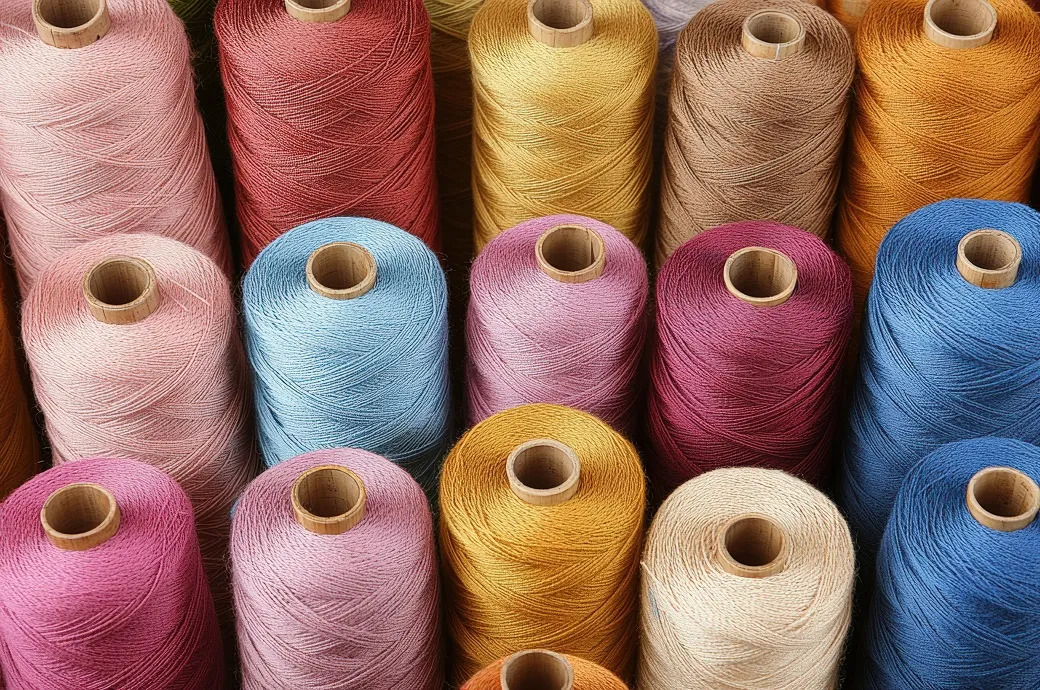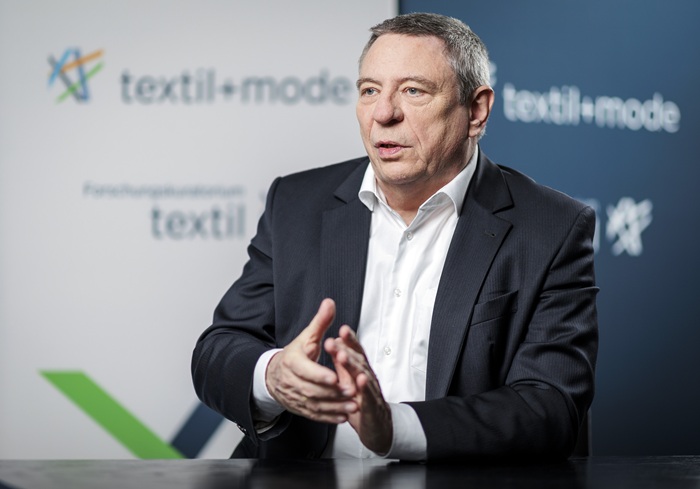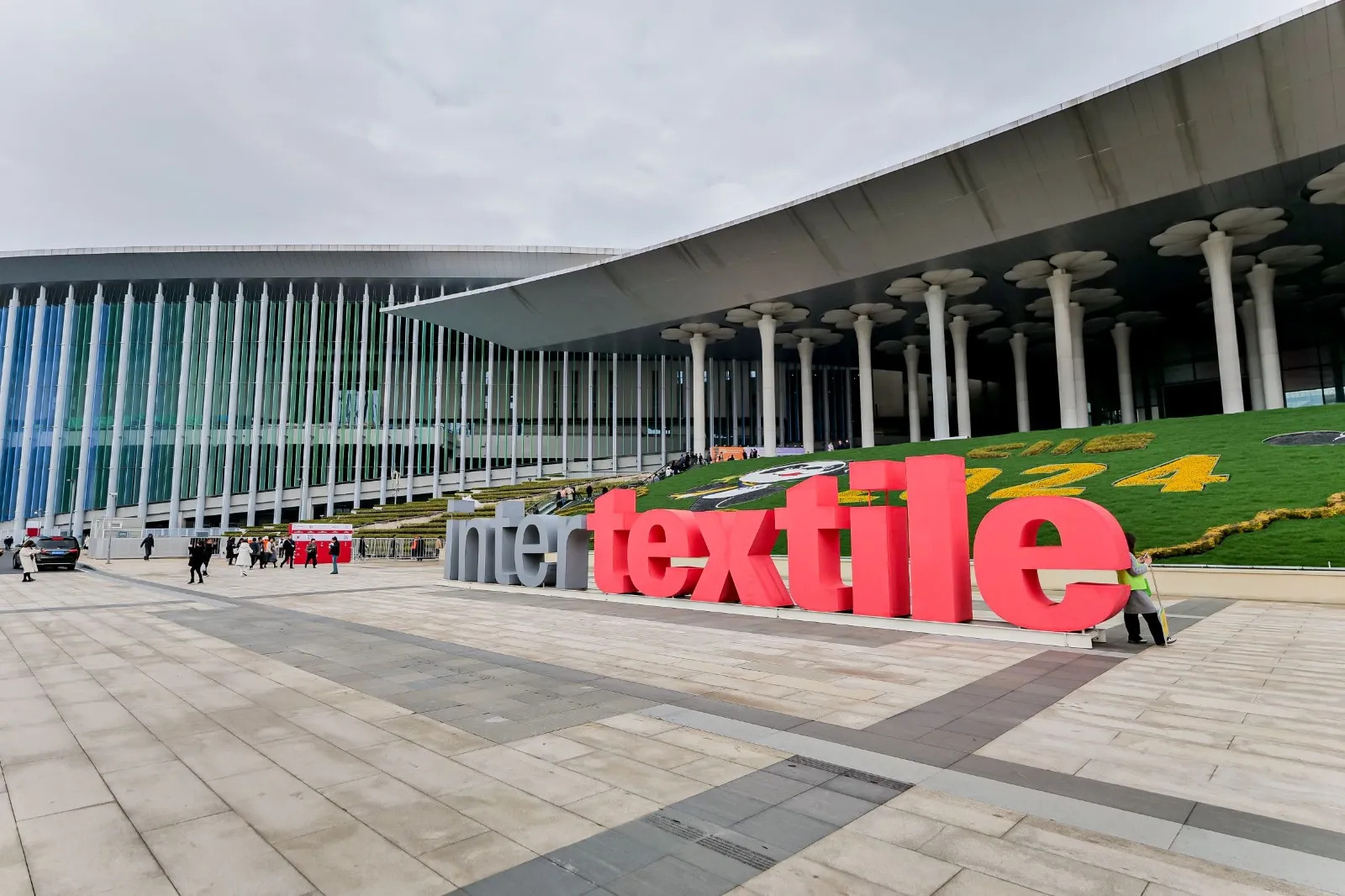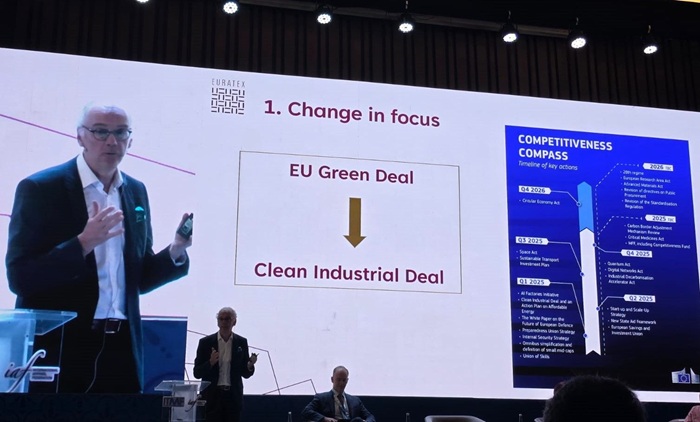FW
Pakistan's yarn merchants say the sales tax on yarn and cloth is harmful. The budget has increased the sales tax on yarn and cloth to three and five per cent from two and three per cent.
Mills say the textile sector is already heavily burdened and imposition of an additional sales tax on yarn and cloth would crush this sector. Cheap yarn imports from India and cheap cloth exports from Russia are damaging the local markets and local industry is unable to compete because of rising input costs.
The country’s textile exports have been continuously sliding for the last 11 months by seven per cent. The textile sector earns more than 50 per cent of the foreign exchange for the country and provides employment to 40 per cent of the workforce.
Yarn and cloth are the base of the textile industry in Pakistan and these constitute the basic raw material for sizing, power looms, printing, processing, made-ups and garment sectors. The yarn and cloth sectors provide employment to a huge section of the workforce.
Additionally Pakistan’s textile sector is confronted with a huge energy crisis, which has led to a huge fall in the productivity of the industry.
The Indonesian textile industry is facing weak sales and rising production costs.Rising costs, especially in electricity, have impacted the local textile industry, which also faced pressures from rupiah depreciation as half of its raw materials are imported.
Indonesia’s economy decelerated to 4.71 per cent year-on-year in the first quarter, its slowest pace in nearly six years, partly due to lower domestic consumption, while recently rupiah and stock prices weakened amid growing concern that the surge in inflation last month would further damage the country’s economic outlook.
West Java is the largest contributor to national textile production with 49 per cent while Jakarta and Banten contribute 16 per cent, Central and East Java 14 per cent each and the remaining three per cent comes from other regions.
To compete with imported products, the industry is looking for a way to decrease electricity costs. It also wants government spending, especially for infrastructure and villages, to be accelerated for disbursement.
Robust economic growth and rising purchasing power are making Indonesia an attractive market for textiles and clothing. Both local and foreign companies are vying for market share. However rising costs are giving domestic producers a hard time as they try to fend off overseas competition.
The combined ITMA and CITME show will be held October 21 to 25, 2016, Shanghai, China. The show is the leading marketing platform for textile machinery manufacturers seeking to tap the China market. It is expected to take up 1,80,000 square meters with participation from some 1,600 exhibitors. The combined show has been taking place since 2008 in China. It takes place every two years.
The event features the unique strengths of the ITMA brand and China's most important textile event, CITME. The move to combine the two shows into one mega high-quality event is supported by all nine European textile machinery associations, the China Textile Machinery Association and the Japan Textile Machinery Association.
The fifth edition of the combined show to be held in October 2016 will have a huge showcase of cutting-edge solutions for textile makers and the exhibition has been showcased by product category for the convenience of visitors. The event has stringent controls in force to protect intellectual property and strong support from all major trade associations around the world.
The last ITMA plus CITME show in 2014 grossed 1,50,000 square meters. There were around 1,600 exhibitors from 28 economies taking part in the exhibition. The show attracted a trade visitors number of around 1,00,000 from 102 economies.
Asia is the world’s largest textile machinery market and China accounts for more than half of the total textile and garment machinery installed during the last ten years.
www.itmaasia.com/
The research division of rating agency Crisil expects the roll-out of goods and services tax (GST) to reduce logistics costs of companies producing non-bulk goods by as much as 20 percent. The savings will accrue from a gradual phasing out of central sales tax (CST), consolidation of warehouse space and faster transit of goods since local taxes (such as Octroi and local body tax) will be subsumed into GST, Crisil Research said.
However, to maximise benefits from the rollout of GST, complete phasing out of CST (currently paid for inter-state movement of goods) and dismantling of state-level check posts are imperatives, Crisil Research said. “To get states on its side, the government has proposed allowing states to levy an additional tax of 1 percent on supply of goods in lieu of CST for two years. We believe this is against the core principle of GST, and will defer full benefits of the rollout. This will also delay the dismantling of check posts so critical to ensure faster transit of goods,” Crisil said.
“Manufacturers of non-bulk goods spend about 5-8 percent of sales on logistics. GST will save warehousing costs of 1-1.5 percent of sales in 3-4 years. Eliminating check-post delays will yield additional savings of 0.4-0.8 percent, thus taking overall savings to 1.5-2 percent of sales,” said Prasad Koparkar, senior director, Crisil Research.
metakey:crisil,gst
Bangladesh's readymade garment exports to the US are losing competitiveness due to the hike in production costs.Readymade garment manufacturers have attributed the political unrest and safety inspection launched by the global retailers’ platforms, Accord on Fire and Building Safety in Bangladesh and Alliance for Bangladesh Worker Safety.
Productivity of Bangladeshi workers is lower than that of competitors and the devaluation of the euro against the dollar has worked as a catalyst to lower growth. On the other hand, compliance has increased production costs, which has led the country’s garment manufacturers to lose their competitiveness in the global market.
Though production cost has risen the product price has not increased. This also makes the sector less competitive and lose market share. So garment manufacturers are introducing production engineering and automation to reduce production cost and enhance productivity to tackle the situation. They have also urged the government to provide policy support to reduce production costs.
Readymade garment exports to the US market from Vietnam also increased by 16.5 per cent while India’s exports grew by 9.82 percent. China, the global leader of apparel manufacturing, lost its share in the US market, which was captured by Vietnam, Bangladesh and India in recent times. China’s export to the US market rose by over one per cent.
Africa's textile and apparel exports to the United States could quadruple over the next decade through an extended duty-free trade treaty.The trade program known as the African Growth and Opportunities Act (AGOA), currently before American lawmakers, provides eligible sub-Saharan countries duty-free access to the world’s top apparel market, giving Africa a competitive edge over suppliers such as Bangladesh and Vietnam.
AGOA was established in 2000. The program expires on September 30, 2015. About 40 African countries are eligible to take part in it and it could be extended another 10 years. This will mean Africa will be able to quadruple its exports, creating another 5,00,000 new jobs.
Last year, US clothing imports from sub-Saharan countries were up nearly six per cent from 2013, as countries such as Lesotho, Kenya, Ethiopia and Tanzania participated in the program.
Africa has lower labor costs and abundant raw materials, such as top-quality cotton from Uganda, but congested ports, a poor road network, lack of skills and old technology are a hindrance.
Asia may face rising costs but is still way more competitive than Africa, especially on productivity, quality and product range. An extension of AGOA will please Asian firms with factories in Africa.
trade.gov/agoa/
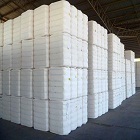
Cotton is not available to India's textile industry at competitive rates. It has to be brought from distant places, incurring additional transportation and other costs. Mills want cotton available to them at a competitive rate and as soon as possible. They want the Cotton Corporation of India (CCI) to release its stocks and make cotton available to the industry. They say if this is not done immediately, it may distort the market and leads to artificial increase in prices thereby making the user segment uncompetitive. 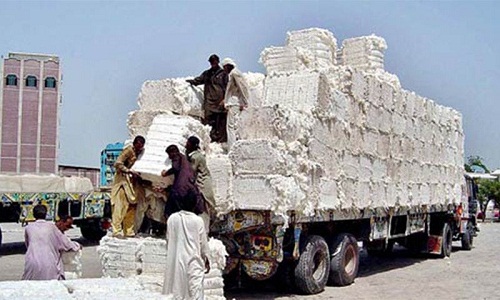
The role of the CCI is primarily to ensure minimum support price for the farmers so that they get a remunerative price for their products. Mills are largely dependent on CCI for their cotton supply. The total requirement of mills is close to 85,000 to 90,000 bales per day whereas CCI has been offering only 40,000 bales per day.
Indian cotton has been cheaper than international cotton. But the situation has changed significantly now and prices are substantially above international prices mainly because of low cotton arrivals in the market. Mills say CCI’s huge stocks are pushing up cotton prices all over the country and that taking advantage of this situation, private traders are hoarding cotton.
According to FICCI the arrival of cotton in the Indian market has dropped considerably in the last few days to 20,000 bales, which also has largely remained unsold because of excessively high prices.
Till date CCI has sold 10.8 lakh bales of cotton and hence carrying stocks of 75 lakh bales, as CCI has bought 85.8 lakh bales of cotton in the current season.
Cotton acreage in India, the top grower in the world, is likely to drop by the most in over a decade this year, as plunging prices and fears of a drought prompt farmers to switch to cultivating pulses in the hope for better returns. Since other crops are giving better returns, there may be a drop of around seven per cent in cotton acreage in India. That will be the steepest fall since 2002-03.
Lower output at the world’s second biggest cotton exporter, after the United States, should help give legs to a recovery in global benchmark prices that have risen 13 per cent from a five-year low of 57.05 cents per pound plumbed in January.
Amid concerns among the industry that not enough cotton has been exported, the Cotton Corporation of India has finally come out with its global tender for export of cotton to Bangladesh.
The earlier advertisement by CCI inviting buyers to register themselves for export to Bangladesh had garnered a good response and some ten exporters had registered themselves with CCI in addition to some of the domestic buyers who export as well. Bangladesh usually purchases around 55 to 60 lakh bales of cotton from India.
CCI chose Bangladesh since the logistics are better and are easier to manage either by the sea or roadway.
US apparel import growth slowed to a near halt in April after surging in March. Total US apparel imports were flat in the month on both a dollar and square meter equivalent basis, bringing the year-to-date import increases in the two measures to three per cent and 4.9 per cent respectively.
Total apparel imports from China fell by 12 per cent in April on both a dollar and square meter equivalent basis. Apparel imports from Vietnam increased by 16.5 per cent in the month, making it the number two source of US apparel imports.
Apparel imports from India grew by 11 per cent. Imports from Bangladesh have grown by 7 per cent so far in 2015, a swing from the 2.3 per cent decline in 2014. Indonesia’s apparel shipments to the US declined by almost three per cent in the first three months of 2015, resulting in a 0.4 per cent share loss, as the country tries to grapple with infrastructure deficiencies and labor issues.
Imports from Haiti have risen by more than 13 per cent in 2015 as the apparel industry there begins to develop. Imports from Myanmar have grown by 123 per cent in the first four months of this year.
The Trans-Pacific Partnership (TPP) is being criticized by many for its lack of transparency. American public and trade unions have been seeking complete documents of the deal to be made public. The TPP is an in-progress trade pact the US is negotiating with 11 other nations, which together account for nearly 40 per cent of global GDP.
Recently, Julian Assange of Wikileaks said that TPP’s transparency clock has run out, and his whistle-blowing website Wikileaks, which has published leaked chapters of the trade deal before, is crowd-sourcing a $100,000 reward for copies of the agreement’s full text. It has already managed $59,337 pledged by 1,087 people since the start of the campaign last Tuesday.
The US Senate passed Trade Promotion Authority (TPA) last month, giving the president authority to propose trade agreements to Congress for a yes or no vote but no amendments, and paving the way forward for TPP and other trade deals. If approved by the House, the TPP text has to be made available for 60 days before the president signs it and for more months before Congress votes on it. By that timeline, TPP could be settled and signed by December.
Ustr.gov
Declining exports of cotton yarn to China have worsened the oversupply situation for Indian spinning mills, who are now looking to domestic demand from the garment sector for relief.
China was a major importer of cotton yarn from India with a share of about 46 per cent of Indian exports of the commodity, but that has declined substantially – to an estimated four per cent in the first three quarters of financial year 2015 – undermining the health of Indian spinning mills. While alternative markets like Bangladesh, Vietnam and Egypt can offer some respite to exporters, their base remains small compared to China.
A mismatch between India’s spinning sector and the fabric sector – yarn manufacturing expanded rapidly in the past few years while fabric manufacturing base remained stagnant – has created a glut in the domestic market making Indian players vulnerable to export demand.
Financial year 2014 was an exceptionally good year for many cotton spinning units in India due to increasing export volumes and steady domestic consumption along with high average sales realisation. However, the decline in export demand mainly from China is likely to result in moderation in their performance during financial year ’15. Further cotton spinning units have suffered inventory losses in the second and third quarters of financial year ’15 on the back of decline in cotton and cotton yarn prices.


